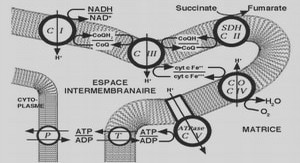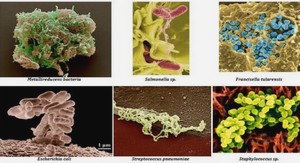Conception et réalisation d’un dispositif d’impact original
Peak analysis
As the peaks on the stress/strain curve are indicators of the brittleness of the sample, a specific way of dealing with them has been devised, the idea being to report both peak number and intensity. For this purpose, we developed an algorithm that scans all points on the stress/strain curve. A new peak is defined when the stress level of the next point is smaller than the current point. From this current point, the algorithm continues to test successive points while the stress level continues to decrease. Once the lowest level has been attained, the amplitude of that peak is defined as the difference in the stress value at the current point minus the smallest value, attained just before the stress increases again (figure III-4). When all the peak magnitudes have been detected, they are sorted over the values ranging from valmin to valmax in a number N of categories, either on a linear or a logarithmic scale.valmin is not necessarily the smallest peak value encountered in a given test. On the contrary, we can choose a threshold value slightly higher than the noise level associated with the device. For dynamic compression tests, this noise value is assessed from the amplitude of the peaks obtained on the signal during free displacement of the moving trolley (figure III-3a). It is important to note that the resonance of the moving trolley, observed at the end of the test, is avoided by only considering data below 50% deformation. Results of the peak analysis are presented as distribution curves. Each point of the curve represents the number of peaks found within the corresponding range of amplitude for an average of three repetitions The above-described device was used to assess the influence of free and bound water on the behaviour of wood (poplar and spruce), by the mean of samples previously equilibrated at different moisture contents. Quasi-static tests were also performed on a conventional testing machine to emphasize the effect of the deformation rate.
Material and methods
The wood samples tested in this study were obtained from a poplar tree (Populus euramericana cv. I214), nearly 40 years old, from northern France (Villers-Cotterêts forest, Aisne) and a spruce tree (Picea excelsa), about 40 years old, from north-eastern France (Brun forest, Meurthe and Moselle). The average basic density of the wood samples (oven-dry mass to green volume) was 305 kg.m-3 for poplar (coefficient of variation (CV) of 3%), and 326 kg.m-3 for spruce (CV of 6%). Defect-free blocks with a straight grain angle were cut in the longitudinal direction of the log. Paired cubic samples with dimensions of 10 × 10 × 10 mm (R, T, L) were carefully sliced from these blocks using a diamond wire saw (Well 3241). The active part of this saw consisted of a high tensile core wire 0.3 mm in diameter, impregnated with diamond grits to allow very gentle cutting. The wire winds and unwinds on two bobbins. A thread system ensures that the wire remains perfectly vertical as it moves. The stress level is minimized by cutting at a constant load (Perré 2007). The upper surface of each sample was prepared for observation using a slide microtome (Microm HM 440E). All samples had the same number and width of latewood rings. The samples were then stored under three different conditions to produce different moisture contents. Six air-dried poplar and spruce samples were obtained by storing the samples for 7 days in the laboratory environment. Three poplar and spruce were stored in a sealed chamber, just above water, for 51 days to obtain samples at fibre saturation point (FSP). Finally, six poplar and spruce samples were immersed in water with vacuum cycles until saturation. After moisture conditioning, our impact device was used to test the samples at high compression rates in a radial direction. The impact velocity was around 1.7 m.s-1 . The influence of compression rate on the mechanical behaviour of the wood was further determined by compressing air-dried and saturated samples at a low rate (1 mm.min-1 ) using a quasi-static compression test (Davenport Nene). Chapitre 3 114 In the quasi-static test, the modulus of elasticity (MOE) was determined as the slope of the linear part of the stress/strain curve. However, in the case of impact tests, this simple determination fails, due to the more complex shape of the curve. The MOE was therefore determined as the slope of a straight line drawn from the origin to the maximum stress level observed at the beginning of the compression plateau (figure III-5). The stress level of the compression plateau, for both the quasi-static and impact tests, was determined as the average stress level over the 25% to 35% strain interval.
Results and discussion
The images of the sample surface grabbed during the test are highly informative and worth an initial qualitative analysis. Figure III-6 presents a selection of images taken during a quasistatic test of spruce in radial direction. The elastic deformation, which occurs at the very beginning of the test, is not clearly visible in these pictures due to the low level of strain. However, as expected, the images collected during the large deformation phase depict a clear effect of the moisture content. In the case of cellular products under compression, the elastic deformation is usually followed by an inelastic domain which results from collapse and gross deformation of the cell (Easterling et al. 1982). This leads to a plateau on the stress/strain curve. For air-dried samples, this inelastic deformation starts in the weakest part of the sample (earlywood) and 0 5 10 15 20 25 0 20 40 60 0 5 10 15 20 25 Strain (%) Stress (MPa) σel 30% E 30 σel max Conception et réalisation d’un dispositif d’impact original 115 is visible as a lighter zone produced by the cooperative collapse of all cells in this zone. As the load progresses, all the earlywood layers of the sample collapse successively until all the cell lumens have disappeared (figure III-6a: pictures 2 to 4). Due to the heterogeneous density of wood within the annual ring, hence a heterogeneous rigidity, the compression strain decreases rapidly from earlywood to latewood. This deformation gradient in turn produces a contrast in the Poisson’s effect, in the direction perpendicular to the displacement, clearly visible on the sample edges at the very beginning of the earlywood layer, where the wood density suddenly drops by a typical factor of three (from c.a. 1000 kg.m-3 down to c.a. 300 kg.m-3 ). The tangential deformation due to the Poisson’s effect is therefore much higher in earlywood than in latewood: this gives rise to tangential stress, tension in latewood and compression in earlywood. At the very end of the test, this field is enough to produce some fractures in the zones under tension (figure III-6a: pictures 5 and 6). The role of water as a plasticizing agent in wood has been widely reported (Goring 1963; Irvine 1984; Dumail and Salmen 1997; Placet et al. 2008). The presence of bound water in the cell wall basically activates the viscoelastic behaviour, hence the viscoelastic creep, namely in the case of quasi-static tests. This explains why the saturated sample is compressed to a thinner final thickness (figure III-6b: picture 6) and presents a high resilience, which enables the sample to depict an impressive recovery (figure III-6b: picture 7). Contrary to the air-dried samples, very few fractures appeared during compression. Because the sample was fully saturated, free water is ejected from the pore network throughout the compression plateau.




